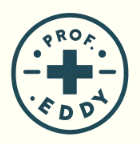The Truth About 8 Constitution Medicine: A Revolutionary Healing Framework Explained
Introduction to 8 Constitution Medicine
8 Constitution Medicine (8체질의학) is a unique, personalized approach to health that categorizes individuals into one of eight body constitutions based on the dominance and deficiency of internal organ energies. Developed by Dr. Do-Won Kwon, this medical model offers customized treatment strategies using diet, acupuncture, and herbal remedies tailored to each individual’s innate constitutional traits. Though relatively young in its formalized history, 8 Constitution Medicine has rapidly gained public interest and clinical traction—despite it being an elective topic in some Korean Oriental Medicine schools. In 2022, it even saw the establishment of the ECMS (The Society of Eight Constitutional Medicine), formalizing a collective academic body to support its development.
What is 8 Constitution Medicine?
Unlike conventional medicine that often treats diseases uniformly, 8 Constitution Medicine treats the body by strengthening or calming specific organs based on one’s constitutional type. It’s not just about symptoms—it’s about systemic balance and long-term vitality. By assessing organ strengths and weaknesses—such as whether your liver is hyperactive or your lungs are underperforming—practitioners guide patients to avoid harmful foods and adopt a lifestyle that supports their unique physiological blueprint.
Understanding the Eight Types
Each of the eight constitutions in this system is defined by two main organs—one dominant (strong) and one recessive (weak). The eight types are:
| Type | Strong Organ | Weak Organ |
|---|---|---|
| Pulmotonia | Lung | Liver |
| Colonotonia | Large Intestine | Gallbladder |
| Renotonia | Kidney | Stomach |
| Vesicotonia | Bladder | Pancreas |
| Hepatonia | Liver | Lung |
| Cholecystonia | Gallbladder | Colon |
| Pancreotonia | Pancreas | Bladder |
| Gastrotonia | Stomach | Kidney |
These organ-based strengths and weaknesses aren’t anatomical in the Western sense, but rather functional energies, reflecting tendencies in digestion, detoxification, emotional regulation, metabolism, and more. Each type comes with its own treatment principles, safe and harmful foods, and acupuncture approaches.
Organ Energy Dynamics and Healing Applications
Internal Organ Hierarchy and Energy Flow
In 8 Constitution Medicine, each individual’s body is seen as a system of energy flow regulated by organ dominance. When one organ is naturally strong, it tends to “steal” energy from its opposing pair, making that counterpart relatively weaker. This dynamic balance is the essence of constitutional diagnosis and treatment. This understanding also helps explain why certain foods or herbs benefit some but harm others, and why uniform treatments often fail in chronic conditions.
Common Misconceptions
1. Body Shape, Personality, and Temperament
One major misconception is that constitution can be determined by body shape, facial structure, or personality. While these may offer clues, they are not reliable indicators. 8 Constitution Medicine is functional, not psychological.
2. Self-Diagnosis is Risky
Using the wrong dietary or acupuncture protocol due to misdiagnosis may worsen conditions. That’s why professional diagnosis using pulse reading, symptom analysis, and clinical experience is essential.
Clinical Applications and Healing Tools
Diagnostic Methods
- Pulse Diagnosis: The most critical and nuanced method.
- Symptom Patterns: Digestive patterns, sleep, temperature sensitivity.
- Tongue and Skin Analysis: Used to cross-verify diagnosis.
Treatment Modalities
1. Diet and Nutrition
Each constitution has its own list of recommended and harmful foods. For example:
- Pulmotonia: Should avoid greasy, rich foods.
- Hepatonia: Benefits from warm, protein-rich meals.
2. Constitutional Acupuncture
This approach tonifies the weak organ or sedates the strong organ—tailored for each constitution.
3. Herbal Medicine & Pharmacopuncture
Herbs are prescribed to balance organ energy based on constitution. Pharmacopuncture introduces herbal extracts into acupuncture points for more precision.
For the original Korean text, visit here. If you’re curious about the basics of traditional Korean medicine and health, read the following article:
What Your Sleeping Position Says About Your Health
Learn Why Studying JangSang Medicine is Important.
Frequently Asked but Silly Questions (Foods Good for the Liver??) Why Full, Thick Hair Is Considered Beautiful: The Fascinating Reasons Behind It (Hair Loss Story #1)

